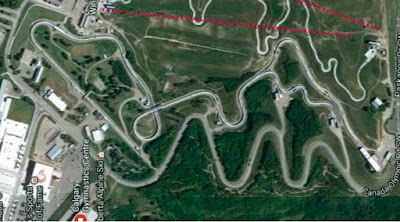At the beginning of December, the Junior and Youth World Cup has kicked off in Calgary.
Within four days and on a single track have been carried out the first two stages. The third will take place in mid January. In addition to this particular distribution of the calendar, other aspects have attracted our curiosity. In order to explore the reasons and the mechanisms, we interviewed Klaus Kofler, coordinator of the Italian junior National team.
Within four days and on a single track have been carried out the first two stages. The third will take place in mid January. In addition to this particular distribution of the calendar, other aspects have attracted our curiosity. In order to explore the reasons and the mechanisms, we interviewed Klaus Kofler, coordinator of the Italian junior National team.
.
Fast&Cool: A few days ago, in Calgary, the first 2 stages of the Junior and Youth World Cup have been carried out. Each category has competed 2 times in approximately 48 hours.
Why has been decided to do so?
 |
| Klaus Kofler ph: @CyntheaHausman2016 |
Why has been decided to do so?
Klaus Kofler: They decided so because, if they had organized there just one race, no Nation would have faced this long journey. A race in America is associated with great costs.
F&C: This year's calendar is rather peculiar: after these first two stages, you'll regain in mid January. Why they opted for a so "fractionated" calendar?
K.K.: Making the Juniors calendar is not so easy, because they have to organize first the luge, bobsled and skeleton races for the adults and only later for the youth. In addition some tracks have no interest in hosting the junior competitions, because they don't make money with them: no TV, few spectators.. Initially had been scheduled one race also in Lake Placid, but in the end the track has not accepted :-(
F&C: We have noticed that, despite the track was the same, at distance of 2 days, the results have been significantly different.
Which factors have allowed this phenomenon, not easy to explain for the layman?
Which factors have allowed this phenomenon, not easy to explain for the layman?
K.K: It is easy to answer: for everyone it was the first time in Calgary! They have done 10 training runs, and then the races. They are still young and are not able to do each run without mistakes. It is normal on their age. They work well and try to improve.
F&C: You have decided to bring only the men's team, why?
 |
| The track in Calgary view from satellite |
K.K.: As I said before, this "journey" costs a lot. In those days the women's team has made a good training in Oberhof and Igls, with many more runs. It is important for their growth.
 |
| Da sx: Felix Schwarz, Lukas Gufler, Fabian Malleier, Ivan Nagler. Accosciato: Leon Felderer ph: Holly Arndt |
K.K.: So are the rules: when there is not one of the component of the Relay, you can join it together with another Country.
F&C: In Calgary there were no German athletes. This has fostered the good results of your guys? To what extent?
K.K.: It is hard to say... but we don't look to others. We try to make a good race, to improve continuously, and then we see what happens ;-)
In the light of what Klaus told us, we hope that the Federations will continue to cultivate the training schools and the FIL will make sure to keep the youth competitions at high level.
Otherwise we fear that this beautiful, but difficult and very "niche" sport will have a very short life!
paola castaldi
You can read the Italian translation of my article on oasport.it at the following link: http://www.oasport.it/2016/12/slittino-klaus-kofler-e-difficile-organizzare-gare-per-i-giovani-senza-introiti-molte-localita-dicono-di-no/
In the light of what Klaus told us, we hope that the Federations will continue to cultivate the training schools and the FIL will make sure to keep the youth competitions at high level.
Otherwise we fear that this beautiful, but difficult and very "niche" sport will have a very short life!
paola castaldi
You can read the Italian translation of my article on oasport.it at the following link: http://www.oasport.it/2016/12/slittino-klaus-kofler-e-difficile-organizzare-gare-per-i-giovani-senza-introiti-molte-localita-dicono-di-no/















